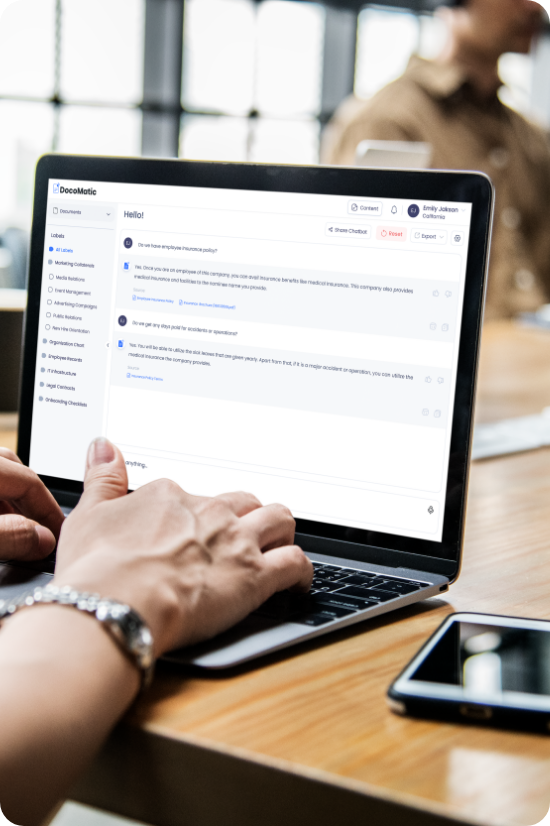Resolving Virtual Assistants’ Challenges With GPT-Enabled Chatbots
Bit expensive
Virtual assistants require more individual attention and human oversight to perform generic tasks, while GPT-enabled chatbots are designed to perform specific tasks. This will require less programming and training in comparison to virtual assistants, which are typically more comprehensive in their capabilities.
Rigid tone of voice
Virtual assistants do not provide flexibility in customizing the tone of voice. This will result in confusing and misleading response generation. Whereas, GPT-enabled chatbots provide a customized tone of voice enabling the user to set the same.
Language barrier
Virtual assistants are probably programmed to generate responses in restricted languages. Whereas, chatbots can believer responses in multiple languages.
Lack of supervision
The virtual assistants may seamlessly perform the tasks which are asked for, yet sometimes they may need additional supervision from management to manage the workload and make them understand what is expected from them.
How DocoMatic, an AI-powered Chatbot Solution, Helps the Virtual Assistants?

Cost savvy
The AI-powered chatbots cost savvy as they do not require any man force to operate. The chatbot is automatically able to generate accurate human-like responses as it is pre-trained.
Flexible tone of voice
You can choose the tone of voice as per your need and preferences. You are flexible in customizing the style, length, and pitch of the response.
Multiple languages
Chatbots are trained to answer in multiple languages without any language restrictions.
Pre-trained model
The GPT-enabled virtual document assistants are in no need of any supervision as they are already trained on massive datasets and parameters. They focus on NLP and machine learning techniques to understand the user’s intent and respond accordingly.
Streamline Daily Virtual Assistants Operations with DocoMatic
Quick data search
DocoMatic helps you quickly find the data from the already uploaded or created documents. Search the query, and DocoMatic will help with the most relevant response, saving you time and effort.
Effective customer support
Machines can go where humans can’t, and the GPT-enabled chatbots are justifying the statements. The 24/7 availability of customer support ensures that all user queries get resolved immediately.
Instant access to data
When you search the query for something, DocoMatic will go through each and every document, fetching the most relevant response to your query. Also get the source of information fetched.
Customized document sharing
Your PM or the departmental heads can easily share or assign the documents only to those who need them. Custom sharing is enabled by DocoMatic, helping you share the doc files to the specified user or department only.
Sync or unsync the document
The uploaded or created data can be synced, unsynced, archived, deleted, or renamed to generate customized and to-the-point responses.
Scalability
With its ability to remember previous conversations and contextual history, it provides the future instincts for your businesses.
Frequently Asked Questions
GPT-enabled chatbot for virtual assistants is a type of chatbot whose algorithms are trained on the basis of natural language processing and artificial intelligence techniques to understand and respond to user queries, They are trained to generate human-like responses.
Some benefits of using a GPT-enabled chatbot for virtual assistants include
- Improved customer service
- Increased efficiency
- Enhanced user experiences
Yes, many GPT-enabled chatbots can understand multiple languages as they are trained on a massive set of data in different languages. They are programmed to respond in the language in which the user asks the query.
GPT-enabled chatbots work in the following manner:
- Processing natural language queries from users,
- Interpreting the meaning behind them,
- Lastly, generating appropriate responses based on pre-trained language models.
Although virtual assistants and chatbots, both are the ripped fruit of artificial intelligence (AI), we can see various differences between them.
Virtual assistants are typically more versatile and can carry out a wider range of tasks, such as scheduling appointments, managing calendars, and controlling smart home devices.
Whereas GPT-enabled chatbots are designed to concentrate primarily on natural language processing and generating responses based on pre-trained language models.
Virtual assistants can be accessed through a variety of devices, such as smartphones, smart speakers, and other connected devices.
On the hand, GPT-enabled chatbots can be accessed through web and mobile applications.
